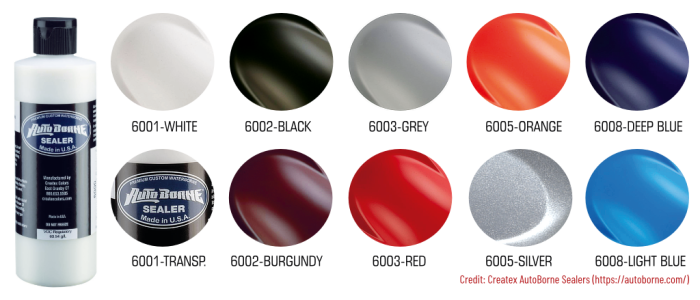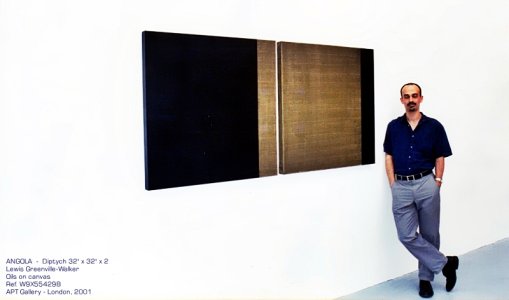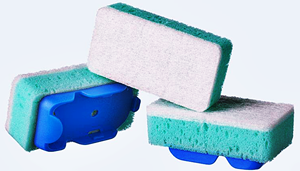GVW LEWIS
Double Actioner
Good Afternoon, 
AutoBorne Sealer/Primer is one of the primers I seem to like the most in modelling applications, although I only have started some tests, just on plastic spoons and old sprues, bits and pieces. Createx say it is suitable for hard surfaces, so in terms of painting art proper, it may be only reliable to prime supports that are rigid, or mounted on a rigid substrate. I haven't tried that, though. I only tried on plastics for modelling applications.
The illustration below shows only the Sealer/Primer colours that I suspect will be most used, although they make also a strong yellow, a bright green and a "tan", which to me appears to be a Burnt Umber:

I only tested Code 6003-Grey. And I did not have their recommended thinner Code 4011, so I added 5% of plain home made thinner. But the outcome is 100% what you can see above. It self-levels as it dries, but it seems to me that it flattens further during the curing process, about a day or two.
I do not usually sand primers. I usually burnish/polish them very gently with this:
They are good and the natural choice for any Createx paint finish. But I wonder if anyone has experience of applying other paint brands (ie non-Createx) on top of these primers and if so, what was the result?
Thank you and best wishes
AutoBorne Sealer/Primer is one of the primers I seem to like the most in modelling applications, although I only have started some tests, just on plastic spoons and old sprues, bits and pieces. Createx say it is suitable for hard surfaces, so in terms of painting art proper, it may be only reliable to prime supports that are rigid, or mounted on a rigid substrate. I haven't tried that, though. I only tried on plastics for modelling applications.
The illustration below shows only the Sealer/Primer colours that I suspect will be most used, although they make also a strong yellow, a bright green and a "tan", which to me appears to be a Burnt Umber:

I only tested Code 6003-Grey. And I did not have their recommended thinner Code 4011, so I added 5% of plain home made thinner. But the outcome is 100% what you can see above. It self-levels as it dries, but it seems to me that it flattens further during the curing process, about a day or two.
I do not usually sand primers. I usually burnish/polish them very gently with this:
They are good and the natural choice for any Createx paint finish. But I wonder if anyone has experience of applying other paint brands (ie non-Createx) on top of these primers and if so, what was the result?
Thank you and best wishes
Last edited:



